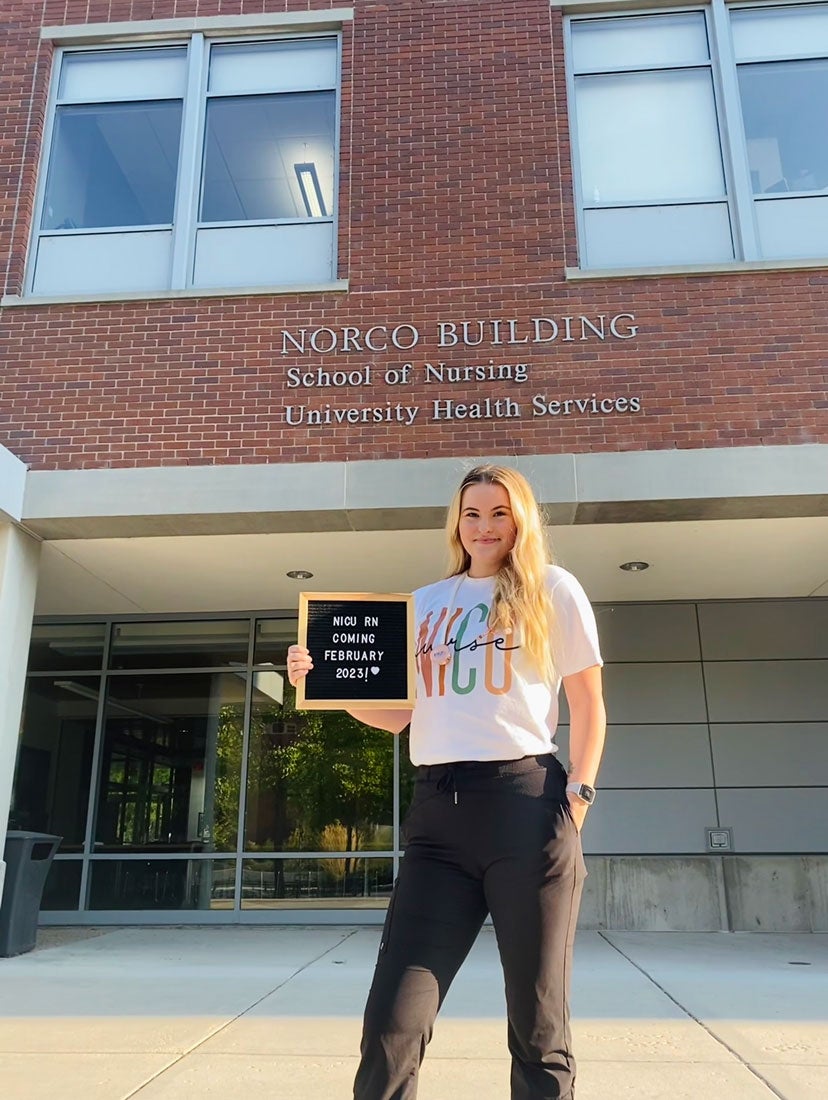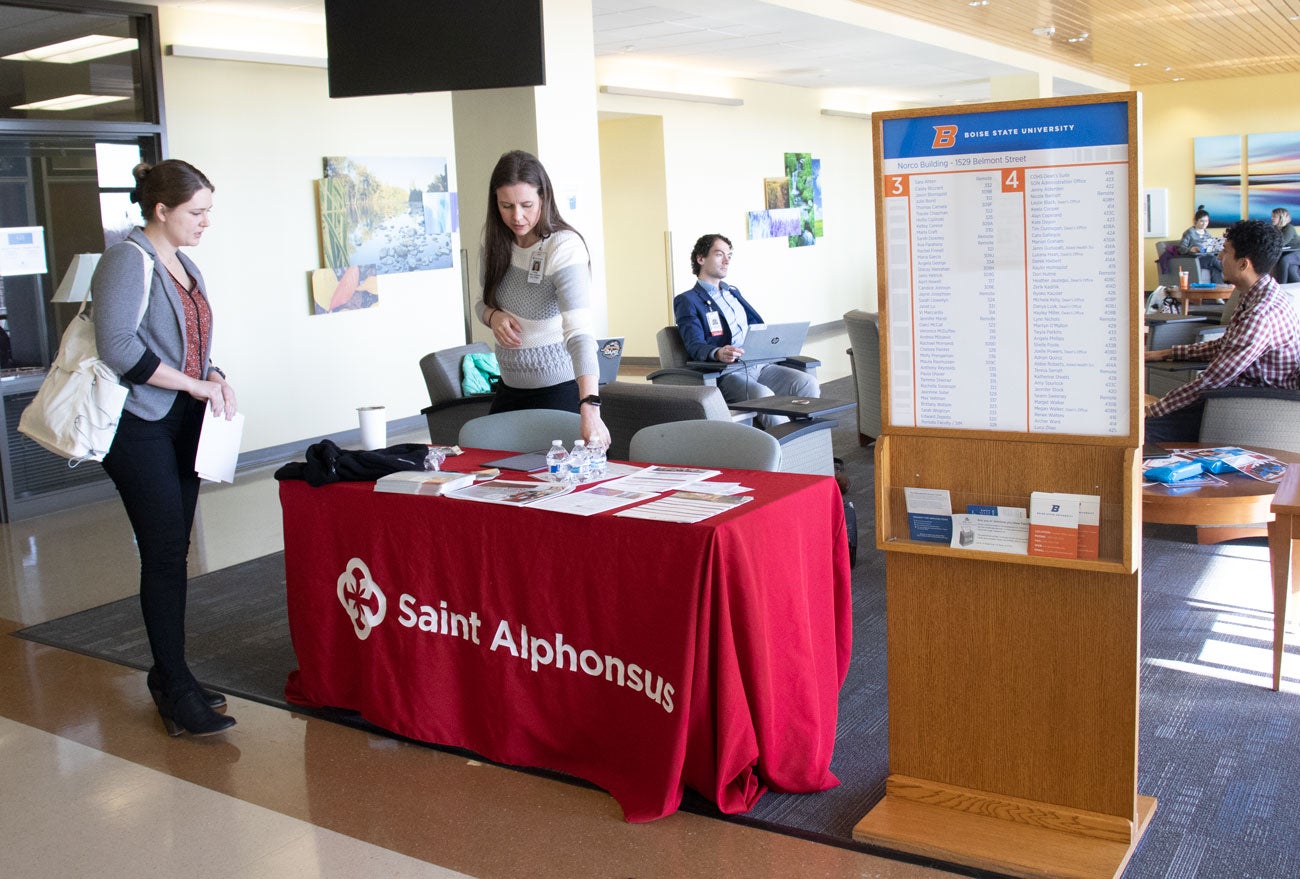According to the American Association of Colleges of Nursing, 100,000 nurses in America left the workforce between 2020 and 2021, causing the largest industry need in 40 years.
Undaunted by the shortage, the School of Nursing is responding with visionary action.
Consider August 2019, when the school increased its undergraduate pre-license cohort size by 33%. Five semesters later 80 bachelor’s-prepared nursing students entered the workforce.
“The faculty and staff of the Boise State School of Nursing had great empathy for the ‘working nurses’ and the shortage,” said Shelle Poole, divisional dean of the School of Nursing. “Within the school we dedicated our time, energy and innovations toward solutions for the future.”
The result of these efforts? Boise State’s skilled graduates are in high demand.
Collaboration gets more nurses in the field

Many nursing students receive job offers before they even graduate, such as Amanda Pace. She reached out to a hiring manager at St. Luke’s Health System almost a year before her intended graduation date of December 2022. They hired her in August.
“It’s important for people to know that you apply now a lot sooner than you would in previous years,” Pace said. “And I got my dream job in the [neonatal intensive care unit].”
In the last year, 86% of students in the pre-license bachelor’s program had a job before they graduated or within the first six months afterward.
This is due in part to collaborative efforts.
The School of Nursing invites a host of community organizations to participate in its “Meet the Employers” job fair each semester. Additionally, St. Luke’s and Saint Alphonsus Health System hold regular interviewing events on-campus.
“If we are on site at their school, it fosters a level of comfort on the students’ end,” said Mary McFadden, the chief nursing officer at Saint Alphonsus.
Jordan Whiton, a campus program manager in talent acquisition at St. Luke’s, agrees. She believes this hiring model “creates a more positive experience for everyone involved.”

Whenever possible, St. Luke’s tries to hire students early and then arrange their senior clinical rotation to be in the same unit. This allows students to get hands-on training before they begin full-time work, which alleviates many stressors of the onboarding process.
“The students are super excited about it because they get to know their leaders, their team members, the department and the unit before [they graduate],” Whiton said.
Considering new nurses make up a large percentage of local health systems’ workforces, a smooth transition into their full-time positions is important for the vitality of the employees.
Bronco nurses bring hope to Idaho
Boise State is the largest provider of new nurse graduates in the state. To get more top-notch nurses working in the community, “the school has kept pace with our healthcare partners, transforming how we educate and prepare our nursing students,” Poole, from the School of Nursing, said.
“I have been impressed in recent years with how Boise State grads have demonstrated a sense of leadership and ownership of their profession,” McFadden from Saint Alphonsus said. “I’m not sure if it’s because many of these new graduates were in school during the pandemic, but they have created a new sense of hope which creates support for both staff and patients.”

Students echo healthcare employer’s sentiments that mindsets have shifted.
“I’m coming into nursing at a time where we’re trying to get back to normal, but normal isn’t here anymore,” Amanda Pace said. “We have to make a new normal.”
In true School of Nursing fashion, Pace isn’t intimidated by the challenges ahead. She feels well-prepared thanks to her nursing education at Boise State.
“There are a lot of great nursing schools but this one definitely has a reputation in the northwest for being the best,” she said. “I’ve done a lot more than I thought I was capable of, and I think that that prepares you for what you need to deal with as a nurse.”